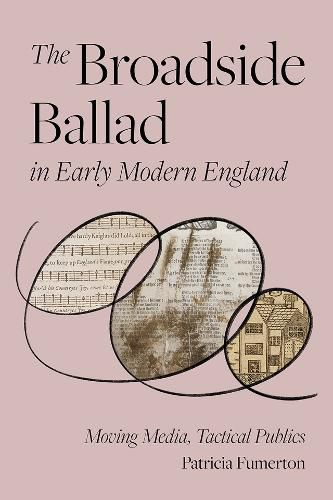Readings Newsletter
Become a Readings Member to make your shopping experience even easier.
Sign in or sign up for free!
You’re not far away from qualifying for FREE standard shipping within Australia
You’ve qualified for FREE standard shipping within Australia
The cart is loading…






In its seventeenth-century heyday, the English broadside ballad was a single large sheet of paper printed on one side with multiple woodcut illustrations, a popular tune title, and a poem. Inexpensive, ubiquitous, and fugitive-individual elements migrated freely from one broadside to another-some 11,000 to 12,000 of these artifacts pre-1701 survive, though many others have undoubtedly been lost. Since 2003, Patricia Fumerton and a team of associates at the University of California, Santa Barbara have been finding, digitizing, cataloging, and recording these materials to create the English Broadside Ballad Archive.
In this magisterial and long-awaited volume, Fumerton presents a rich display of the fruits of this work. She tracks the fragmentary assembling and disassembling of two unique extant editions of one broadside ballad and examines the loose network of seventeenth-century ballad collectors who archived what were essentially ephemeral productions. She pays particular attention to Samuel Pepys, who collected and bound into five volumes more than 1,800 ballads, and whose preoccupations with black-letter print, gender, and politics are reflected in and extend beyond his collecting practices. Offering an extensive and expansive reading of an extremely popular and sensational ballad that was printed at least 37 times before 1701, Fumerton highlights the ballad genre’s ability to move audiences across time and space. In a concluding chapter, she looks to Shakespeare’s The Winter’s Tale to analyze the performative potential ballads have in comparison with staged drama.
A broadside ballad cannot be read without reading it in relation to its images and its tune, Fumerton argues. To that end, The Broadside Ballad in Early Modern England features more than 80 illustrations and directs its readers to a specially constructed online archive where they can easily access 48 audio files of ballad music.
$9.00 standard shipping within Australia
FREE standard shipping within Australia for orders over $100.00
Express & International shipping calculated at checkout
In its seventeenth-century heyday, the English broadside ballad was a single large sheet of paper printed on one side with multiple woodcut illustrations, a popular tune title, and a poem. Inexpensive, ubiquitous, and fugitive-individual elements migrated freely from one broadside to another-some 11,000 to 12,000 of these artifacts pre-1701 survive, though many others have undoubtedly been lost. Since 2003, Patricia Fumerton and a team of associates at the University of California, Santa Barbara have been finding, digitizing, cataloging, and recording these materials to create the English Broadside Ballad Archive.
In this magisterial and long-awaited volume, Fumerton presents a rich display of the fruits of this work. She tracks the fragmentary assembling and disassembling of two unique extant editions of one broadside ballad and examines the loose network of seventeenth-century ballad collectors who archived what were essentially ephemeral productions. She pays particular attention to Samuel Pepys, who collected and bound into five volumes more than 1,800 ballads, and whose preoccupations with black-letter print, gender, and politics are reflected in and extend beyond his collecting practices. Offering an extensive and expansive reading of an extremely popular and sensational ballad that was printed at least 37 times before 1701, Fumerton highlights the ballad genre’s ability to move audiences across time and space. In a concluding chapter, she looks to Shakespeare’s The Winter’s Tale to analyze the performative potential ballads have in comparison with staged drama.
A broadside ballad cannot be read without reading it in relation to its images and its tune, Fumerton argues. To that end, The Broadside Ballad in Early Modern England features more than 80 illustrations and directs its readers to a specially constructed online archive where they can easily access 48 audio files of ballad music.